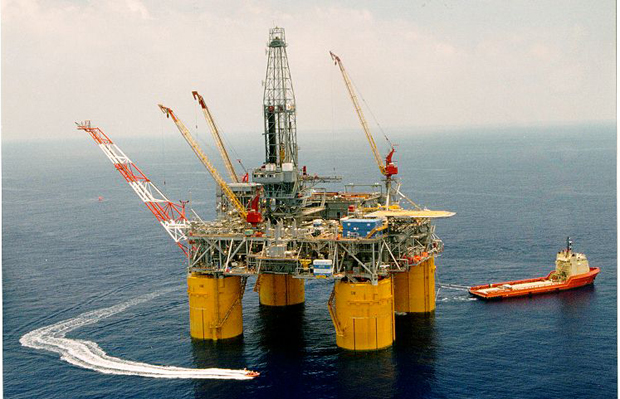By Glenda Pavon
Royal Dutch Shell recently began production at the Stones offshore field in the Gulf of Mexico. Shell formally announced the beginning of production on Tuesday, the 13th of September through a press announcement on the company’s website. The Stones, located in the Walker basin, is located 322km off the coast of New Orleans. The site was discovered in 2005 and is the world’s deepest offshore oil and gas project to date about 2,900 meters below water (9,144 meters below sea level). Prior to Stones, Shell already had claim to the world’s deepest offshore project (2,880 meters below water), which is also located in the Gulf of Mexico. The innovations of the project demonstrate Royal Dutch Shell’s commitment to gaining expertise, becoming a leader in the deepwater offshore oil and gas industry, as well as a leader in supplying the energy needs of the US.
According to Shell the floating production, storage, and offloading vessel (FPSO) called Turritella will reach peach production of 50,000 barrels per day by late 2017.
The FPSO differs from other offshore projects because of its ability to disconnect and sail away from the field. This enables the vessel to sail away from the site in the event of unsafe conditions, such as hurricanes. The FPSO Turritella is also able to store 800,000 bbl of crude oil. The company completely funded the Turritella and will operate site drilling from 8 planned seabed wells. The Turritella is not Shell’s first vessel of this type, but it is the first in the Gulf of Mexico.
Dealing with increasing pressure from environmentalists and climate change activists, the project is a bold move for Shell, given that the world’s largest marine oil spill took place in the Macondo Prospect oil field in the Gulf of Mexico just 60km (40 miles) off the Louisiana coast in 2010. Offshore exploration and drilling is politically charged and an ongoing source of controversy. The Deepwater Horizon was a semi-submersible drilling rig operated by BP. In April 2010, an explosion caused the discharge of nearly 5 million barrels of oil and the sinking of the Deepwater horizon.
The Stones project is also a display of confidence by Shell given low oil prices. Weeks ago BP called off its latest project in the Gulf of Mexico due to rising costs; and just last year Shell called off some of its more expensive projects, such as offshore drilling operations in the Alaskan Arctic. The Anglo-Dutch company has told shareholders it is committed to investing heavily in offshore projects because it sees potential in future supplies. Innovations like the project at Stones “will help us unlock more deep water sources around the world,” according to Shell.
Shell has also partnered with the Marine Science division of the University of Mississippi. Increasing research is being conducted on the ocean floor and it is not commonly known that the oil and gas industry contributes significantly to the marine biology field each year. Shell is enhancing marine research efforts by allowing scientists to attach instruments to deepwater buoys, which scientists can later use to collect important data, such as deepwater currents, temperatures, and carbon monoxide levels that may affect weather patterns.
The Stones production site in the US Gulf of Mexico demonstrates Royal Dutch Shell’s commitment to being a worldwide industry leader in deepwater exploration and drilling.

Simon Bowers. Shell Begins Production at World’s Deepest Underwater Oil Field. The Guardian. September 11, 2016. https://www.theguardian.com/business/2016/sep/11/shell-begins-production-at-worlds-deepest-underwater-oil-field
Zainib Calcuttawala. Shell Starts Production in Ultra Deepwater Field in Gulf of Mexico. Oilprice.com. September 6, 2016. http://oilprice.com/Latest-Energy-News/World-News/Shell-Starts-Production-In-Ultra-Deepwater-Field-In-Gulf-Of-Mexico.html

